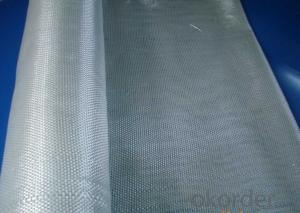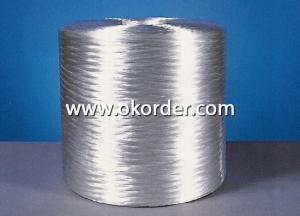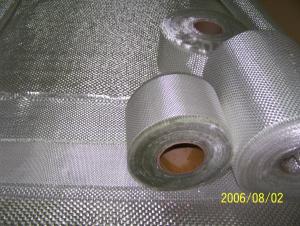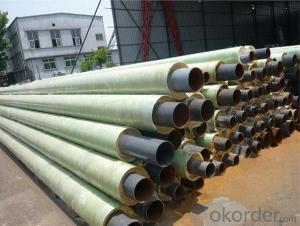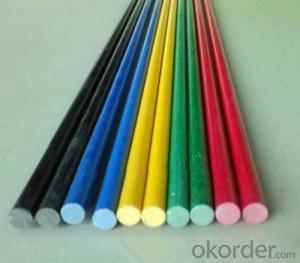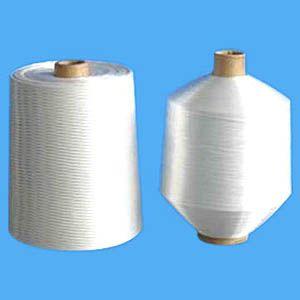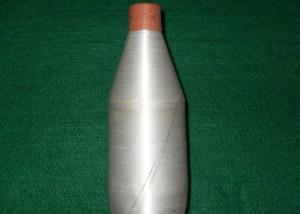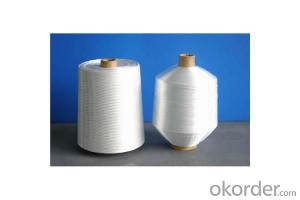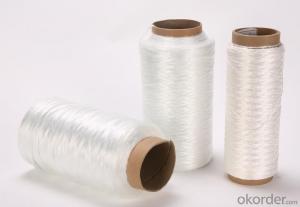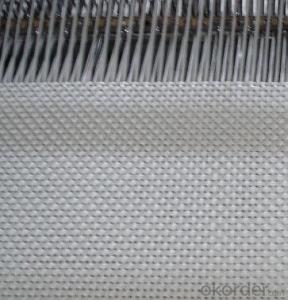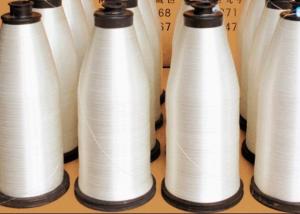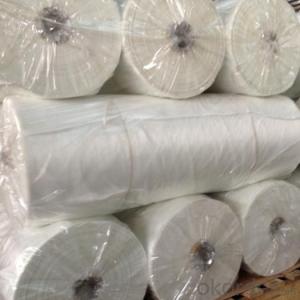Fiberglass Fabric Anti-fire And Environmental Production
- Loading Port:
- Shanghai
- Payment Terms:
- TT OR LC
- Min Order Qty:
- 500 m²
- Supply Capability:
- 50000 m²/month
OKorder Service Pledge
OKorder Financial Service
You Might Also Like
Fiberglass Fabric Anti-fire And Environmental Production
Fiberglass Fabric Introduction:
Fiberglass fabric is weaved by high quality fiberglass,as a kind of engineering material,which is
many excellent characteristics:
flame-resisting,corrosion resistant,high strength,heat resistance.stable structure,good chemical resistance,durability.
Fiberglass Fabric Features:
Warp and weft yarns are parallel arrangement as flat situation, with uniform tension;
Fiber is aligned with large consistency, stable and easy operation;
Good moldability, fast and complete wet out in resins, resulting in high productivity;
Good transparency and high strength of composite products.
Fiberglass Fabric Specification:
mark | Fiber consistency(ends/ cm) |
Area weight (g/ m2) |
Thick-ness (mm) |
Width (cm) |
Length (mm) | Breaking strength(N)≥ |
weave | |||
Warp direction | Weft direction | Warp direction | Weft direction | |||||||
EW200 | 16 | 12 | 200±20 | 0.2 | 90-130 | 300-1200 | 980 | 980 | ||
EW210 | 16 | 12 | 200±20 | 0.21 | 90-130 | 300-1200 | 1080 | 1080 | Twill weave | |
Plain weave | ||||||||||
EWR360 | 3.2 | 1.8 | 354±18 | 0.35 | 50-300 | 100 | 2000 | 2000 | ||
EW280 | 16 | 10 | 280±28 | 0.26 | 90-130 | 300-1200 | 1800 | 1800 | ||
EW300 | 14 | 10 | 320±32 | 0.3 | 90-130 | 300-1200 | 1500 | 1500 | ||
EW430 | 20 | 12 | 420±42 | 0.43 | 90-130 | 300-1200 | 2000 | 2000 | Broken twill | |
EWR136 | 10 | 10 | 136±13 | 0.136 | 100 | 200 | 850 | 850 |
Plain weave | |
EWR200 | 8 | 7 | 200±20 | 0.21 | 100 | 200 | 1200 | 1200 | ||
EWR400 | 3.6 | 3.2 | 400±30 | 0.4 | 100 | 50-100 | 2500 | 2500 | ||
EWR600 | 2.6 | 2.5 | 600±50 | 0.6 | 100 | 40KG | 4000 | 4000 | ||
EWR580 | 2.5 | 2.3 | 576±29 | 0.58 | 100 | 40KG | 3850 | 3850 | ||
EWR800 | 1.8 | 1.8 | 800±60 | 0.8 | 100 | 40KG | 4600 | 4600 | ||
Product Show
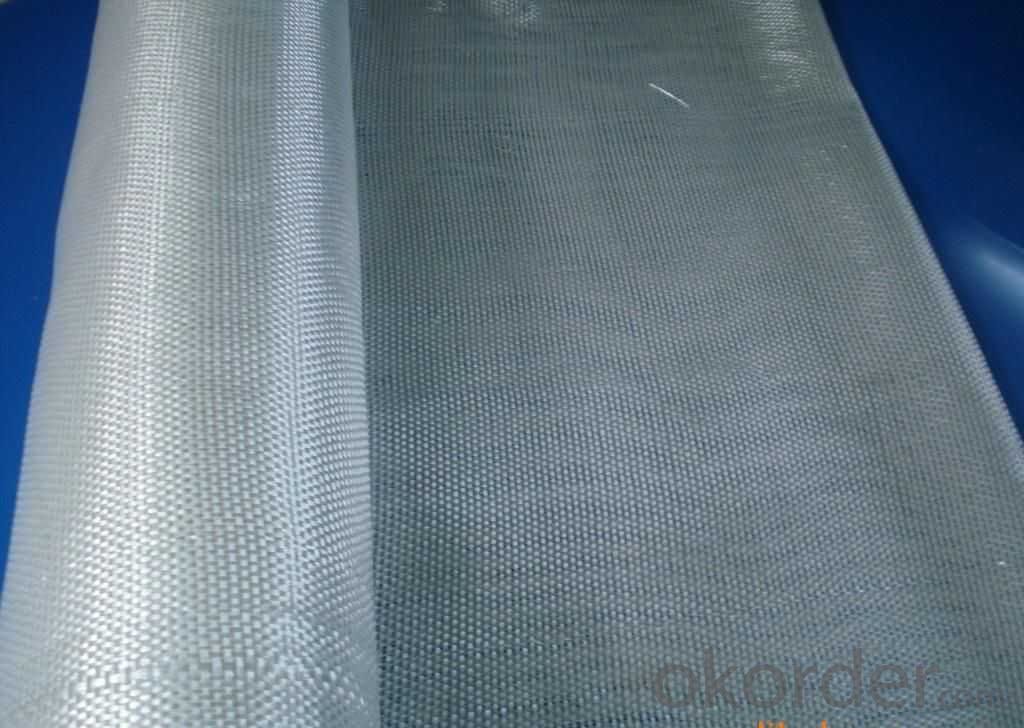
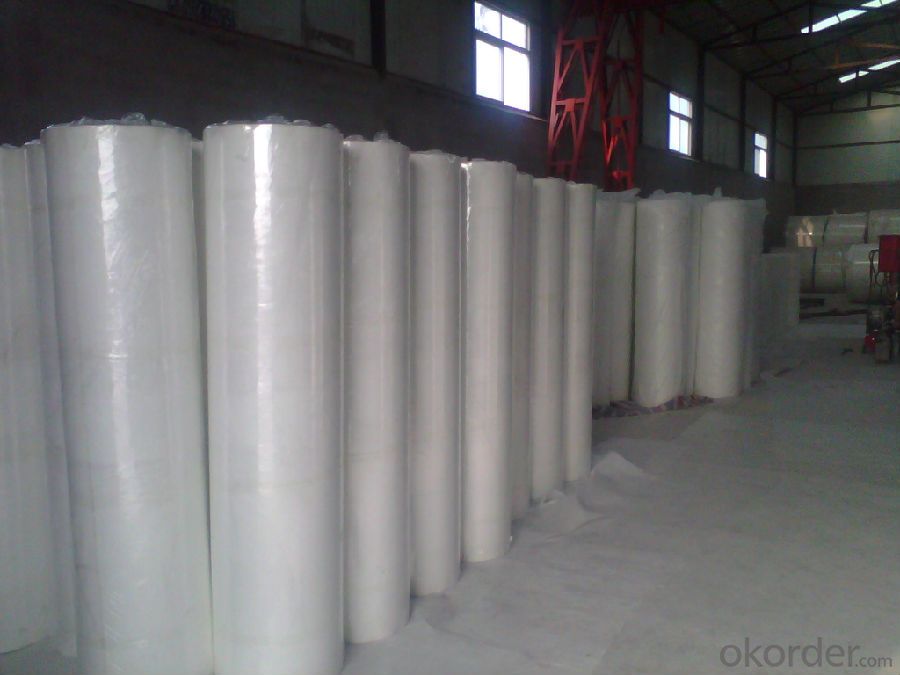
Fiberglass Fabric Usage:
E-glass woven roving is a schistose double faces reinforcement fabric that is weaved into from roving in directly.
E-glass fiber fabric (thin fabrics with thickness from 0.025 to 0.09mm) is suitable for electrical isolation mica product, wax cloth as the reinforcement materials.
E-glass woven roving applys to all kinds of polyester reinforcement system, (such as unsaturated polyester resin, vinylite,epoxy resin and phenolic resin.
E-glass woven roving is a high performance reinforcement material. It is widely used in hand lay-up and machinery processing products, (such as vessel, container, airplane and vehicle component, furniture, athletic facilities and other industry.
FAQ
1.Package of Fiberglass Fabric?
Fiberglass fabric is wound on a paper tube with inner diameters of 50. 8, 76 or 152mm. Each roll is wrapped in a plastic bag, then to be packed in a carton box. The rolls are to be horizontally placed.
Width (cm): 90, 100, 127
Length (m): 100, 200, 300, 400
2.Storage of Fiberglass Fabric?
Store rolls in a cool, dry location
Protect rolls from weather and other damage.
3.If sample available if needed?
We aim to offer our customer best Products&Service,samples are allowed if necessary.
- Q:How does the cost of fiberglass yarn compare to other types of yarn?
- The cost of fiberglass yarn generally tends to be higher compared to other types of yarn. This is primarily due to the unique properties and manufacturing process of fiberglass yarn. Fiberglass yarn is made from thin strands of glass fibers that are processed and spun into yarn. The production of fiberglass yarn involves specialized equipment and requires careful handling to ensure the fibers do not break or become damaged. Additionally, the raw material used in fiberglass yarn production, which is glass, is typically more expensive compared to other natural or synthetic fibers commonly used in yarn manufacturing. As a result, the cost of fiberglass yarn is generally higher compared to other types of yarn, making it a less common choice for general knitting or crocheting projects. However, fiberglass yarn is often sought after for its specific properties, such as high strength, temperature resistance, and insulation capabilities, which can make it valuable in certain industries or specialized applications such as reinforcing composites, insulation, or electrical components.
- Q:Is fiberglass yarn resistant to acids or alkalis?
- Fiberglass yarn is known for its excellent resistance to acids and alkalis. The inorganic nature of fiberglass, composed mainly of silica, provides it with strong resistance to chemical attack. Acids such as sulfuric acid, hydrochloric acid, and nitric acid have limited impact on fiberglass yarn, making it a reliable material for applications in industries dealing with corrosive substances. Similarly, fiberglass yarn also exhibits resistance to alkalis such as sodium hydroxide and potassium hydroxide. This resistance to acids and alkalis makes fiberglass yarn suitable for use in various industries, including chemical processing, water treatment, and electrical insulation.
- Q:Can fiberglass yarn be used for high-performance applications?
- Yes, fiberglass yarn can be used for high-performance applications. Fiberglass yarn is known for its strength, durability, and resistance to heat and chemicals. These properties make it suitable for a wide range of demanding applications where high-performance is required. For example, fiberglass yarn is commonly used in aerospace and automotive industries for making lightweight yet strong components. It is also used in the construction industry for reinforcing concrete structures, as well as in the manufacturing of high-pressure hoses, electrical insulation, and various types of filters. Additionally, fiberglass yarn is often used in the production of sports equipment such as tennis rackets, hockey sticks, and surfboards, where its high-performance characteristics are crucial for ensuring superior performance and durability. Overall, fiberglass yarn is a versatile material that can be effectively utilized in various high-performance applications.
- Q:Can fiberglass yarn be used in the production of curtains and blinds?
- Curtains and blinds can indeed be produced using fiberglass yarn. This versatile material possesses numerous advantages for curtains and blinds. Notably, it is lightweight, durable, and resistant to heat, fire, and chemicals. Moreover, fiberglass yarn is renowned for its exceptional insulation properties, which aid in maintaining desired room temperatures. Additionally, it boasts high tensile strength, making it ideal for crafting robust and long-lasting curtains and blinds. The inclusion of fiberglass yarn in curtains and blinds offers improved privacy, light control, and defense against harmful UV rays. All in all, fiberglass yarn represents a dependable and pragmatic choice for the production of curtains and blinds, delivering both aesthetic appeal and functional benefits.
- Q:Can fiberglass yarn be used for reinforcement purposes?
- Yes, fiberglass yarn can be used for reinforcement purposes. It is commonly used in various industries, such as construction, automotive, and aerospace, to reinforce materials and provide strength and durability. The high tensile strength and resistance to heat and chemicals make fiberglass yarn an ideal choice for reinforcement applications.
- Q:Can fiberglass yarn be used for making gloves?
- Yes, fiberglass yarn can be used for making gloves. Fiberglass yarn is known for its high strength and heat resistance properties, making it suitable for applications where durability and protection are important, such as gloves. These gloves made from fiberglass yarn can provide a high level of thermal resistance and protection against cuts, abrasions, and other hazards. Additionally, fiberglass yarn can also be blended with other materials to enhance its properties, such as adding flexibility or comfort. However, it is important to note that fiberglass can be irritating to the skin and may cause allergic reactions for some individuals, so it is crucial to take appropriate safety measures, such as wearing protective clothing and gloves, while working with fiberglass yarn or products.
- Q:Can fiberglass yarn be used in electrical cables?
- Indeed, the utilization of fiberglass yarn in electrical cables is possible. Renowned for its exceptional strength, durability, and resistance to both heat and fire, fiberglass yarn is highly suitable for serving as insulation and reinforcement within electrical cables. It is frequently employed as a crucial component in the fabrication of high-temperature cables, particularly in the aerospace, automotive, and industrial sectors, where extreme temperatures pose a challenge that demands cable integrity. Furthermore, the non-conductive nature of fiberglass yarn guarantees that it does not impede the electrical conductivity of the cables. All in all, fiberglass yarn represents a dependable and effective choice when incorporating it into electrical cables.
- Q:Can fiberglass yarn be used for making scarves?
- Yes, fiberglass yarn can be used for making scarves. Fiberglass yarn is a versatile material that is known for its strength and durability. It is often used in various industries such as construction, automotive, and aerospace. However, when it comes to scarves, fiberglass yarn may not be the most common choice due to its unique properties. While it offers excellent insulation and resistance to heat, it may not provide the softness and comfort that many people look for in a scarf. Additionally, fiberglass yarn can be itchy and irritating to the skin, which is not desirable for a garment that comes in direct contact with the neck area. Therefore, although technically possible, it is not a popular choice for making scarves.
- Q:Is fiberglass yarn suitable for automotive applications?
- Yes, fiberglass yarn is suitable for automotive applications. It is commonly used in the automotive industry for its high strength, heat resistance, and durability. It is used in various automotive components like insulation, reinforcements, and composites, providing improved performance and safety.
- Q:How does the diameter of fiberglass yarn affect its performance?
- The performance of fiberglass yarn is greatly influenced by its diameter. When the yarn has a smaller diameter, it typically exhibits a higher strength-to-weight ratio. This makes it well-suited for applications that demand both durability and lightness. Additionally, thinner yarns offer enhanced flexibility, making them easy to weave, knit, or use for reinforcement in composites. On the contrary, yarns with a larger diameter generally possess increased stiffness and rigidity, making them suitable for applications requiring resistance to deformation and rigidity. These thicker yarns are commonly used in settings where load-bearing capacity and structural integrity are crucial, such as in the construction or industrial sectors. Moreover, the diameter of fiberglass yarn can also impact its thermal and electrical conductivity. Thinner yarns often possess superior thermal and electrical conductivity properties, which can be advantageous in specific applications like insulation or electrical components. In conclusion, the diameter of fiberglass yarn plays a significant role in determining its performance by influencing factors such as strength, weight, flexibility, stiffness, thermal conductivity, and electrical conductivity. Consequently, careful consideration should be given to selecting the appropriate yarn diameter that aligns with the specific requirements and intended use.
1. Manufacturer Overview |
|
|---|---|
| Location | |
| Year Established | |
| Annual Output Value | |
| Main Markets | |
| Company Certifications | |
2. Manufacturer Certificates |
|
|---|---|
| a) Certification Name | |
| Range | |
| Reference | |
| Validity Period | |
3. Manufacturer Capability |
|
|---|---|
| a)Trade Capacity | |
| Nearest Port | |
| Export Percentage | |
| No.of Employees in Trade Department | |
| Language Spoken: | |
| b)Factory Information | |
| Factory Size: | |
| No. of Production Lines | |
| Contract Manufacturing | |
| Product Price Range | |
Send your message to us
Fiberglass Fabric Anti-fire And Environmental Production
- Loading Port:
- Shanghai
- Payment Terms:
- TT OR LC
- Min Order Qty:
- 500 m²
- Supply Capability:
- 50000 m²/month
OKorder Service Pledge
OKorder Financial Service
Similar products
New products
Hot products
Hot Searches
Related keywords
